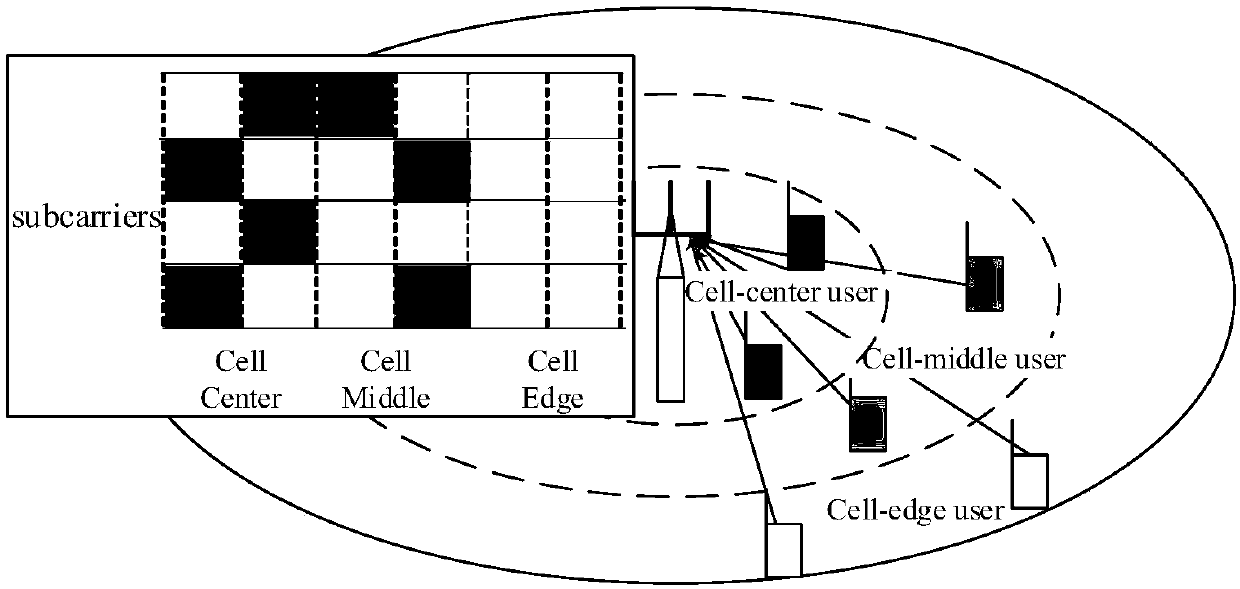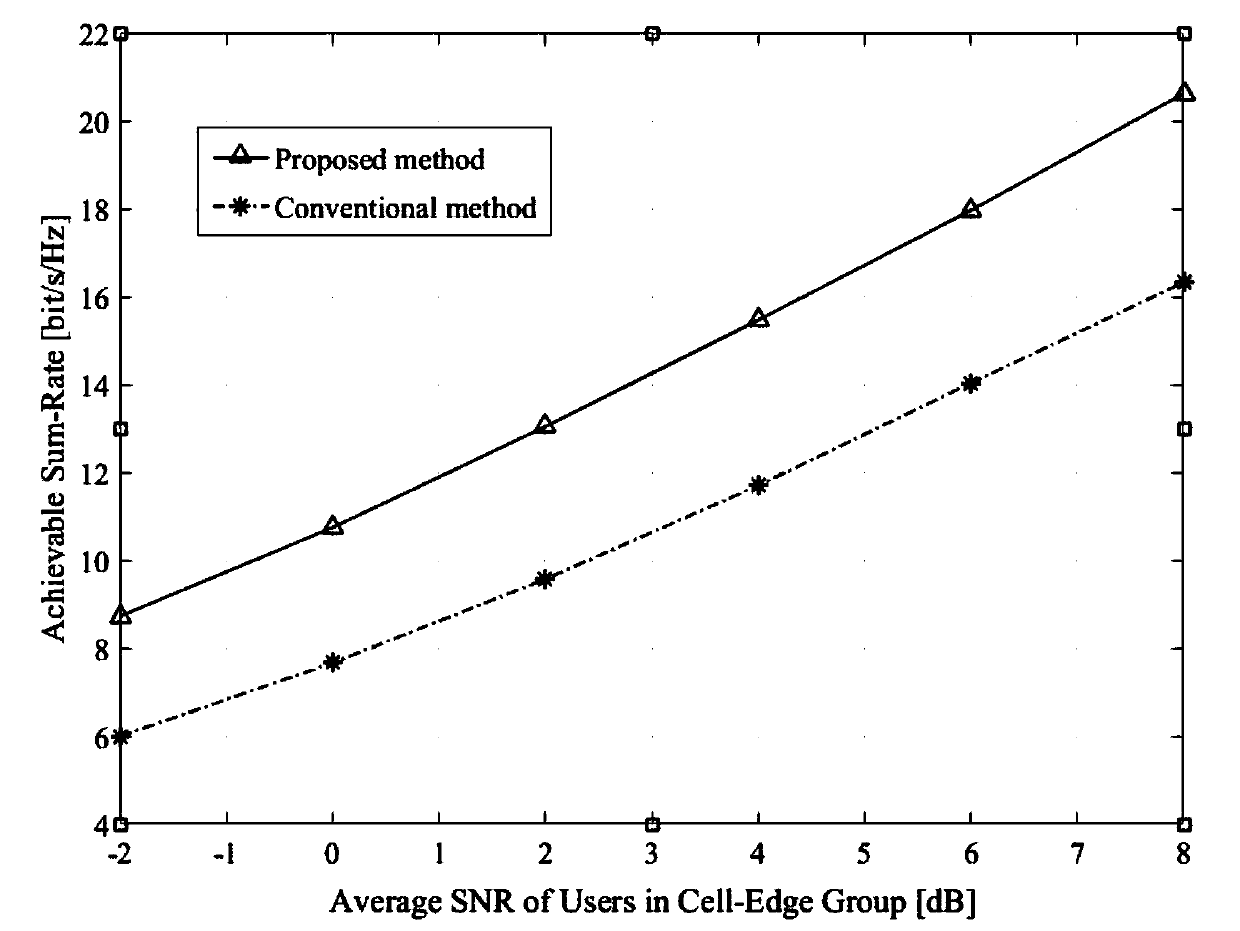Resource allocation method for channel condition optimization in NOMA of low-density code
A technology of resource allocation and channel status, applied in the direction of transmission path separation device, wireless communication, digital transmission system, etc., can solve the problems of mapping scheme design, maximum system and capacity target are not optimal, etc., to improve performance and improve and rate, and the effect of reducing the block error rate
- Summary
- Abstract
- Description
- Claims
- Application Information
AI Technical Summary
Problems solved by technology
Method used
Image
Examples
Embodiment 1
[0041] figure 1In an uplink low-density code NOMA communication system, the number of users is N=6, and the number of subcarriers is M=4. The base station schedules 6 users to share data on 4 subcarriers. The 6 The users consist of 2 cell edge users, 2 cell middle users, and 2 cell center users. The base station allocates subcarriers to each user for data transmission according to the channel conditions of the six users. During the allocation process, it is necessary to consider that the number of users carried by the same subcarrier cannot exceed three to prevent excessive decoding complexity.
[0042] figure 2 The resource allocation method proposed by the present invention is simulated and compared with the random selection regular resource allocation method not optimized by this method. In the simulation, the number of user selections is N=6, and the number of subcarriers is M=4.
[0043] The following describes how to apply the present invention and how to improve the ...
PUM
 Login to View More
Login to View More Abstract
Description
Claims
Application Information
 Login to View More
Login to View More - R&D
- Intellectual Property
- Life Sciences
- Materials
- Tech Scout
- Unparalleled Data Quality
- Higher Quality Content
- 60% Fewer Hallucinations
Browse by: Latest US Patents, China's latest patents, Technical Efficacy Thesaurus, Application Domain, Technology Topic, Popular Technical Reports.
© 2025 PatSnap. All rights reserved.Legal|Privacy policy|Modern Slavery Act Transparency Statement|Sitemap|About US| Contact US: help@patsnap.com



